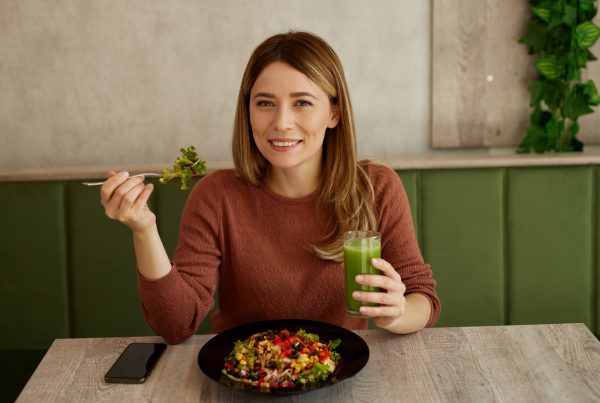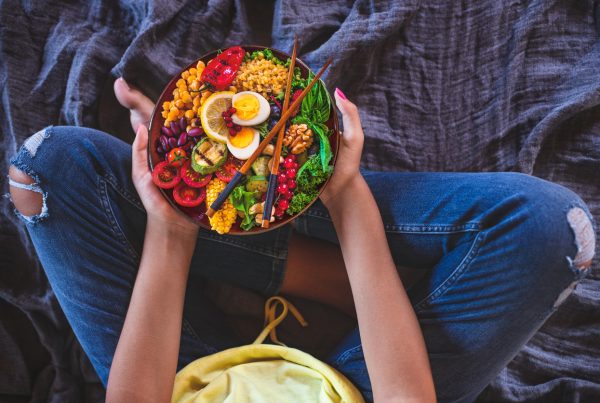Dr Linia Patel (PhD, RD) explains how meal planning can be an absolute game changer for people with busy lives and gives tips on how to do it.
To be the healthiest, fittest, strongest version of themselves, most people know that regular movement, getting enough sleep and eating well are important, but (and that is a big BUT) applying that knowledge into the context of their busy, sometimes stressful, lives can be complicated.
I have first-hand experience of being time poor, as I spend a lot of my time travelling for work. If I don’t make a conscious effort, then healthy eating does not happen for me – despite being a dietitian. Meal planning for many can be a game changer, as it ensures you have healthy food available when you need it most.
Practical ways to make meal prepping work for you
Meal prepping is the concept of preparing whole meals, dishes or getting ingredients ready ahead of schedule. There are various ways to meal prep – not all of which involve spending a whole Sunday afternoon cooking dishes for the week to come. You can actually mix and match all these food rituals in a way that works for you. The key is that you anticipate, plan and strategise – and have fun in the process! Here are my three top tips to make it work for you:
-
Find your ritual.
There are various ways to meal plan and the key is to pick the method that works for you. I am a fan of the Sunday ritual. Obviously, it does not have to be on a Sunday. You can choose any day you like. It is just that Sunday is often a time when people are more free, more relaxed and able to devote more time. Each Sunday I try to do a level of meal prepping. Meal prep can involve simply chopping ingredients so you have them ready when you need them or, if you want more flexibility, simply filling your pantry and fridge with the right ingredients, allowing you to put meals together in the week. Or you may decide to batch cook all your meals so you can easily grab individual portions. Or you could simply cook one aspect of the meal – such as the protein, which can be more time consuming.
The daily ritual allows you to prep a few extra items to have on hand for later in the day or the following day. It often takes the same time to prepare a few items as it does to prepare one. For example, you could chop up three carrots instead of one or boil four eggs instead of two.
Once you have found your ritual, here are some practical ways to break down the rituals:
- Stick to a routine. Picking a specific time to plan, strategise and deliver is key. Knowing exactly when you’ll shop for groceries and prep your meals will help you form a good routine. It may be that you keep Sunday mornings for grocery shopping and meal prepping. Or you could use Monday evenings for making lunches for the rest of the week.
- Come up with a general menu. It doesn’t need to be super long. It could be a few days ahead. Just get a basic sense of the food you will need to have on hand for the next few days or week ahead. Look at your upcoming schedule. What meals will you be eating at home and which will you be eating out? The key is also to create some variety so that you don’t get bored with your meals.
- Build a shopping list from your menu. This will help you to be as efficient as possible when you hit the supermarket … and you will be less tempted to buy random things on offer (your wallet will thank you). If you need inspiration for meal ideas, look at recipe books or online. If you are planning on cooking a couple of different meals, choose recipes that use different appliances. This will limit time, as you can prepare more than one dish at once. A good rule of thumb is to stick to one oven meal and a maximum of two stove-top meals at once, and perhaps one that requires no cooking at all.
-
Think of snacks.
In the western world, for the majority, snacks contribute to 20% of our daily calorie intake, so it’s important we plan for them. Snacking smart is a great way to keep your blood sugar levels in check. Controlled blood sugar levels are the foundation of good nutrition. Go for protein- and fibre-rich combinations such as unsalted and unroasted nuts, raw veggies and hummus, popcorn (popped yourself!), roasted chickpeas or energy balls.
-
Store well.
Your food storage can make the difference between a fabulous or average pre-prepared meal. I have had many leaking lunch box incidents, so I have learned my lessons and have the following recommendations:
- Invest in some good-quality containers. BPA-free microwaveable containers as well as Pyrex glassware are good options. Using old jars for things like overnight oats also works very well. Bento-style boxes that are compartmentalised are a great option for lunches or meals that require ingredients to be mixed at the last minute. Bye bye soggy salad! In storage terms, same-shaped containers will also help you to optimise the space in your fridge or freezer.
- Use labels. Remember to label and date your containers, particularly if you use the freezer. In general, frozen meals should be eaten within three to six months and refrigerated meals should be consumed within three to four days.
- Thaw and reheat foods safely. Thaw food or meals in your refrigerator instead of on your countertop. For fast thawing, submerge foods in cold tap water and change the water every 30 minutes. Frozen meals should be reheated and eaten within 24 hours of defrosting. Reheat foods only once. The more times you cool and reheat a food, the higher the risk of food poisoning.Have you checked out Linia’s best-selling online educations?
- Nutrition for Menopause
- Gut Health – the power of the microbiome
- Low Carb: the evidence & application
- Sports Nutrition Basics
- Plant-Based Eating: The Essentials
- Food as Medicine? Food and inflammation
Which one do you fancy?
About the author

Dr Linia Patel has a BSc degree in biochemistry and physiology and has recently achieved a PhD in public health. Linia is a leading dietitian and sports nutritionist. Her passion is translating nutritional science into easy-to-digest and practical advice.
Further reading
- Bellisle F (2014), Meals and snacking, diet quality and energy balance, Physiology & Behaviour, 134: 38-43.
- Snacks in the UK. Accessed here: Snack foods in the UK – statistics & facts | Statista








